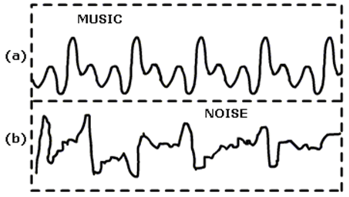Sound Worksheet
Objective Type Questions
- Match the following:
- Match the following:
- State whether the statement is true or false:
The lower the frequency of vibration, the higher is the pitch. - Fill in the blanks:
(a) The property of sound that animals use to find their way and locate their food is______________.
(b) ______________ is the instrument used in the laboratory to produce the sound of a fixed frequency.
(c) The number of vibrations completed in one second is known as _______________.
(d) Sound absorbing materials are required in auditorium to avoid _______________. - Unscramble the following words:
(a) NATIOCIOSLL
(b) NELODUSS
(c) CFRYEQNUE
Multiple Choice Questions - Amit is an engineer who is designing a new communication device. He needs to know in which mediums the device will be unable to transmit sound.
He has four options: Wood, Water, Air, and Vacuum.
Can you help Amit by selecting the correct mediums for his device?
(a) Wood and Water
(b) Wood, Water, and Air
(c) Only Vacuum
(d) Water, Air, and Vacuum - 1 Hz = _________.
(a) One vibration per minute
(b) 1000 vibrations per minute
(c) 60 vibrations per minute
(d) 100 vibrations per minute - Arun is a marine biologist studying the communication patterns of dolphins. He wants to analyze the sounds produced by dolphins and determine their frequency range. Which frequency range should he focus on to capture and analyze the dolphin's communication sounds?
(a) between 20 and 20000 Hz
(b) above 20000 Hz
(c) below 20 Hz
(d) between 500 and 10000 Hz - Which of the following is a potential solution to mitigate the harmful effects of noise pollution in a residential area?
(a) Increase the volume of televisions and music systems.
(b) Set up noise-producing industries near residential areas.
(c) Remove trees and other natural barriers to sound.
(d) Build factory far away from residential areas. - In order to reduce the loudness of a sound, we have to
(a) decrease its amplitude of vibration of the sound.
(b) decrease its frequency of vibration of the sound.
(c) increase its frequency of vibration of the sound.
(d) increase its amplitude of vibration of the sound.
Subjective Questions - Why can we hear the sound of a clock clearer at night than during the day?
- How do loudness and pitch of sound depend on amplitude and frequency, respectively?
- Why does a vibrating simple pendulum not produce any sound?
- What do you mean by musical sound and noise? Give two examples of each. Also, represent musical sound and noise graphically.
- State the difference between infrasonic, sonic and ultrasonic sound.
Assertion-Reasoning Questions
Select the correct answer to these questions from the codes (a), (b), (c) and (d) as given below: - Assertion: The shape of the outer part of the ear is like a funnel.
Reason: The eardrum is like a stretched rubber sheet. - Assertion: The eardrum is not essential for hearing.
Reason: The eardrum sends vibrations to the inner ear. - Assertion: Sound can travel through water.
Reason: Sound requires a medium for propagation. - Assertion: In humans, the sound is produced by the larynx.
Reason: The vocal cords within the larynx vibrate to produce sound waves.
Case-Based Questions - During science class, Ravi’s teacher explained that the audible range of sound for humans is between 20 Hz and 20,000 Hz. This means that sounds with frequencies below 20 Hz or above 20,000 Hz cannot be heard by humans. Ravi was curious and decided to experiment at home. He used a frequency generator app on his brother’s phone and played sounds with different frequencies. He found that he could not hear sounds with frequencies below 20 Hz or above 20,000 Hz.
Answer the following question based on the given information.
(a) What is the audible range of sound for humans?
(b) Why can’t Ravi hear sounds with frequencies below 20 Hz or above 20,000 Hz?
(c) How does the frequency of a sound affect its pitch?
(d) State the difference between high-pitch sound and low-pitch sound.
Explore more Science Sample papers and Solutions
-
Crop Production And Management Worksheet
- Microorganisms: Friend And Foe Worksheet
- Coal And Petroleum Worksheet
- Combustion And Flame Worksheet
- Conservation Of Plants And Animals Worksheet
- Reproduction In Animals Worksheet
- Reaching the Age of Adolescence Worksheet
- Force And Pressure Worksheet
- Friction Worksheet
- Chemical Effects of Electric Current Worksheet
- Some Natural Phenomena Worksheet
- Light Worksheet
- Competency Based Questions for CBSE Class 8 Science
Key Features of CBSE Class 8 Science:
- Prepared by subject matter experts
- According to the latest CBSE syllabus
- Helpful when doing homework
- Easy to understand
- Helpful for quick revision
- Score more marks in the examination
- Free textbook solutions & doubt-solving sessions
- Increase paper-solving speed
- Improvement in marks







